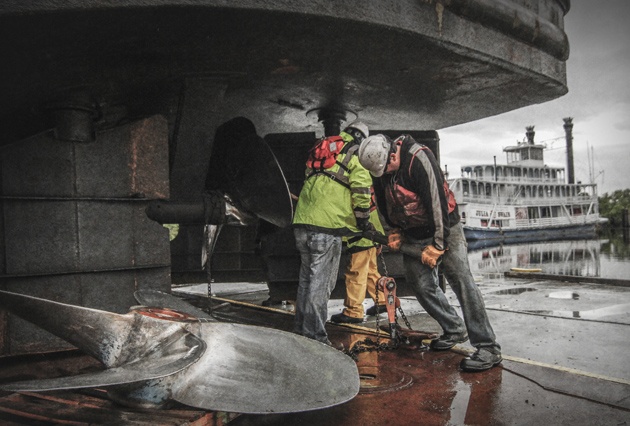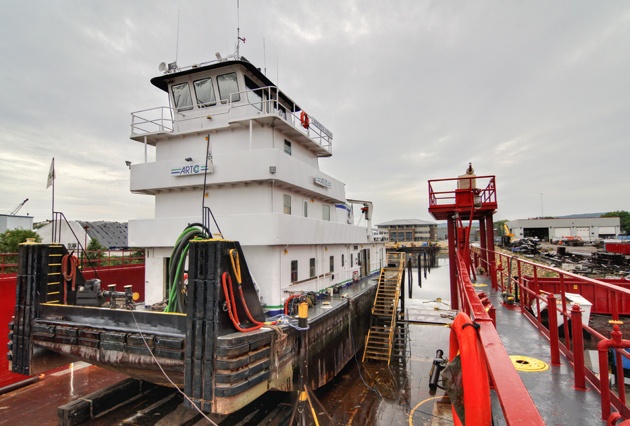Seasonal Preparations: When to Schedule Your Dock Repairs
Wiki Article
Efficient Dock Repair Service Techniques: Making Sure Architectural Stability
Guaranteeing the architectural honesty of anchors through efficient fixing methods is vital for the durability and safety and security of aquatic facilities. Ultimately, selecting the ideal fixing materials, such as composite materials and corrosion-resistant alloys, is vital for longevity.Assessing Dock Damage
Evaluating dock damage is an essential initial step in guaranteeing the structural stability and safety and security of any kind of docking facility. Secret facets to analyze include the dock's structure, pilings, decking, and hardware (Dock Repairs).Architectural engineers or certified assessors normally carry out these analyses using specialized methods and devices. Undersea evaluations could use sonar devices or from another location ran automobiles (ROVs) to discover immersed damage. Above water, visual inspections are matched by utilizing wetness meters and various other analysis tools to uncover underlying problems not instantly noticeable to the nude eye.

Finding Repair Work Products
Choosing the ideal repair service products is a pivotal action in the dock restoration procedure, one that straight affects the long life and efficiency of the repaired framework. Material option have to be driven by factors such as ecological conditions, load-bearing requirements, and compatibility with existing dock parts. Wood is a standard selection for anchors due to its natural durability and visual appeal. Choosing the best type of timber, such as pressure-treated lumber or normally rot-resistant types like cedar or teak, is essential to withstand marine settings.Along with timber, composite materials are increasingly preferred due to their resilience and reduced maintenance needs. Compounds, generally made from a blend of plastic and timber fibers, use exceptional resistance to rot, bugs, and UV damage. For steel docks, picking corrosion-resistant alloys such as galvanized steel or marine-grade light weight aluminum is important to avoid corrosion and make certain architectural integrity in saline water conditions.
Epoxy materials and marine-grade sealants are vital for repairing splits and sealing joints, providing a water-proof barrier and improving the dock's overall strength. By diligently choosing top quality products, dock repairs can attain resilient outcomes, thus guarding against future destruction and guaranteeing secure, reputable use.
Structural Support Methods
Effective structural reinforcement methods are critical in making certain the stability and longevity of dock repair services. This approach is particularly effective for docks exposed to heavy tons or rough ecological problems.Another important technique is the application of fiber-reinforced polymers (FRP) These materials offer high strength-to-weight ratios and exceptional resistance to corrosion, making them excellent for reinforcing wooden or concrete docks. FRP can be applied in strips or sheets and bonded with epoxy materials to improve structural honesty.
Bracing and anchoring systems additionally play a critical function in structural support. Cross-bracing, utilizing metal or wooden light beams, can counteract side forces, decreasing swaying and activity. Securing systems, such as helical piers or driven piles, provide a secure structure by transferring lots to much deeper, much more stable dirt layers.
Finally, the integration of load-distribution plates can assist distribute weight extra equally across the dock's surface, reducing localized stress and anxiety points. These techniques collectively guarantee that anchors stay durable and safe, efficient in withstanding the roughness of their functional atmosphere.
Advanced Fixing Methods

One more top article innovative strategy entails undersea welding, which permits fixings to be conducted without the need to dewater the location. This method is especially helpful for addressing structural issues in submerged dock components, guaranteeing very little disturbance to procedures. Boosted welding strategies, paired with robot systems, supply accuracy and integrity, thereby extending the life-span of the dock.
In addition, cathodic defense systems are applied to stop deterioration in metal dock structures. By utilizing sacrificial anodes or amazed current systems, these techniques properly minimize the electrochemical procedures that result in product wear and tear.
Finally, advanced tracking innovations, such as structural health monitoring (SHM) systems, provide real-time data on the problem of dock frameworks. These systems make it possible for aggressive maintenance and timely interventions, ultimately guaranteeing the long-term architectural integrity of the dock.
Upkeep and Prevention
Upkeep and prevention are basic ideas that underpin the longevity and safety of dock frameworks. Routine evaluations are paramount, permitting very early detection of wear and tear, prospective weaknesses, and ecological impacts. An aggressive method, entailing regular checks for deterioration, rot, and architectural shifts, minimizes pricey repair services and prolongs the dock's functional life.Safety nets should consist of applying safety layers to metal parts to defend against corrosion and utilizing cured timber to withstand decay. Additionally, making certain proper drain and air flow can protect against water accumulation, which is a typical source of architectural destruction. Incorporating high quality products and sticking to supplier standards during construction and repair service phases additionally play important functions in boosting durability.

Educating workers in dock maintenance best practices ensures regular application of safety nets. Leveraging technological advancements, such as drones for evaluations and sensors for real-time surveillance, can additionally improve maintenance initiatives. By focusing on upkeep and prevention, dock owners can guarantee structural honesty, functional security, and affordable management over the dock's life-span.
Verdict
Finally, maintaining the architectural honesty of marine centers demands extensive dock repair work strategies. Thorough examinations utilizing sophisticated tools discover both visible and concealed this link problems, while the option of suitable repair products enhances durability. Applying structural support techniques addresses stress factors efficiently. Advanced repair work strategies, coupled with routine upkeep methods, make certain the dock stays functional and safe under varied environmental problems. Embracing these approaches substantially lengthens the life expectancy and functionality of marine framework.Ensuring the structural integrity of docks via efficient repair service strategies is extremely important for the longevity and safety of marine facilities.Selecting the ideal fixing products is a pivotal step in the dock restoration process, one that directly influences the long life and efficiency of the fixed framework.Efficient architectural reinforcement methods are important in making certain the stability and long life of dock repairs. By focusing on upkeep and avoidance, dock proprietors can make sure architectural stability, operational safety, and affordable management over the dock's lifespan.
In conclusion, maintaining the architectural honesty of aquatic centers necessitates comprehensive dock repair strategies.
Report this wiki page